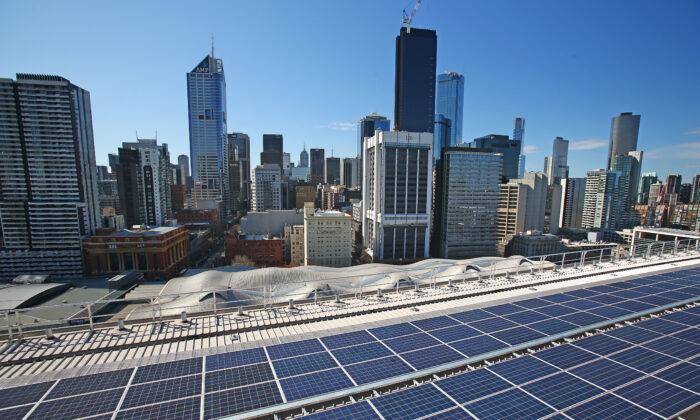Most people agree that energy policy in Australia has been a “failure” for the last 20 years. Dig a little deeper and you will find that what experts disagree on is which direction it failed in.
Some believe it failed to prioritise climate change enough, and others too much. Some believe that it failed to enable the private sector, while others that it failed to control it.
Certainly, energy policy has been a significant issue for all six prime ministers Australia has had over the last 20 years—right back to the centre-right Liberal Party’s proposed emissions trading scheme in the early 2000s under Prime Minister John Howard.
Carbon taxing was pivotal to his Labor Party successor Kevin Rudd losing his prime ministership to Julia Gillard.
While climate change policy was the core difference between Liberal Prime Ministers Tony Abbott and Malcolm Turnbull, who each deposed the other from leadership over it, first in opposition, and then in government.
With COVID-19, Prime Minister Scott Morison generally had bigger fish to fry, but still appointed himself resource minister so he could foolishly veto an offshore gas exploration permit.
This is the true reason for the claim of “failed policy:” each side’s discontent. The energy policy debate was hotly contested, yet had no overall winners.
Yet this is why both sides are also wrong. Australia has actually had good policy in most areas for the last two decades.
Yes, the industry is worried over the looming threat of carbon taxing and emissions trading, amid disruptive legal cases, exploration moratoria, locked gates, slow approvals, and being perpetually bad-mouthed by politicians.
But while it felt like a rope being pulled to breaking point in a tug-of-war between frustrated factions, the mark has so far remained between the lines.
How else can we explain the outcomes? Australia has ample energy to supply its needs. Three large electricity networks (and some smaller rural ones) consistently provide reliable electricity.
Ongoing research and development have increased innovation, including the efficient installation and use of renewables. At the same time, Australia managed to become a super-provider to the global market, home to the world’s largest coal port, and rising over the last decade to become the world’s largest exporter of liquefied natural gas (LNG).
But Not All Is Rosy
The first problem and this may surprise some readers, is the private sector.Previously the private sector was one layer of protection against bad energy decisions because it could be relied on to act in its best interests—which meant supplying ample energy.
Yet the investment world has become swamped by a rising tide that began in 1992: retirement pension funds.
In Australia, superannuation companies own more than 40 percent of the shares on the Australian Stock Exchange and are actively pushing for climate-change action from their investment vehicles.
Alongside superannuation are private activist investors, like tech billionaire Mike Cannon-Brookes. This year he failed at an attempt to purchase Australian energy giant AGL.
Yet when AGL tried to split its company in two—a green company and a traditional fossil fuel one—Cannon-Brookes was able to influence the executive board and fight off the de-merger—having the last laugh.
Government Tightening the Noose Around the Private Sector
The government, of course, is the second problem. In Victoria, the state Labor government recently promised to establish a state electricity company, effectively re-privatising part of the sector.At a federal level, the government doesn’t need to privatise the sector, they are instead dictating pricing—imposing a cap on how much companies can sell wholesale coal and gas (they can’t cap oil, because we buy it from overseas).
They are also expanding the powers of the Australian Energy Market Operator, so more decisions will be made by decree rather than by the market. Meanwhile, they have also rejected a proposed market “capacity mechanism,” which would have put a price on energy reliability.
All of these decisions disincentivise the energy sector from doing its job.
What Does 2023 Hold?
It is impossible to know what the future will hold. Speculating would be silly.Yet we can be thankful that bad decisions don’t always have bad outcomes. A lot of bad policy over the years has been compensated by an industry that is motivated to satisfy its customers and pushes and squeezes its way past hurdles to do so.
- First, the severity of Europe’s winter. If they have a very cold winter, then they may run very low on fuel and the human outcomes will be severe. The implications for their future energy supply, future prosperity, and the Russia-Ukraine war are all uncertain.
- Secondly, the global oil price. Will it increase or decrease from here? It is a simple supply-demand question. When the global economy slows down, then we use less oil and the price may remain low. But if the global demand stays high, the price may push upwards and if the price goes high enough … that can cause the economy to slow down. It’s a catch-22 and we all want some stable middle ground. The best solution is to increase supply—on that front, we’ll also need to keep an eye on OPEC and its relationship with Russia.
- Thirdly, Australian gas demand. One obvious response that may occur after the government imposed price caps on domestic wholesale gas is an increase in local demand. Gas producers will have to find a stopgap solution to fill that demand which may end up coming from “uncontracted” gas likely destined for global export (and not doing any favours for international prices). This may also result in companies failing to meet international export contract obligations.
- Finally, Australia’s electricity stability in winter. This year, a significant loss of coal-fired generation capacity jeopardised energy security across the east coast. All those supply chain issues and aging infrastructure problems we had then we will still have next year. In 2015, a state-wide blackout in South Australia brought an unprecedented focus on energy security and resulted in several policy and system improvements. Yet we continue to have frequent near-misses. When might the next game-changing blackout event occur?
Hopefully, it is a political tipping point before it is a real one. Former Prime Minister Kevin Rudd’s climate change policies became the iceberg that sank his prime ministership. What will happen to Prime Minister Anthony Albanese when he takes on the energy sector?





